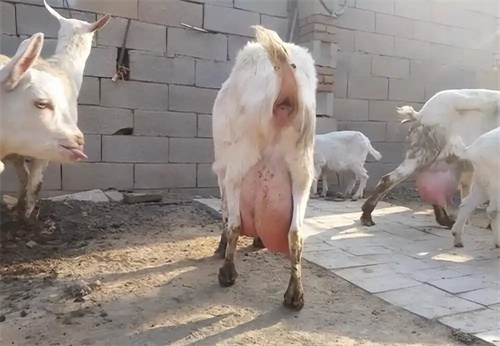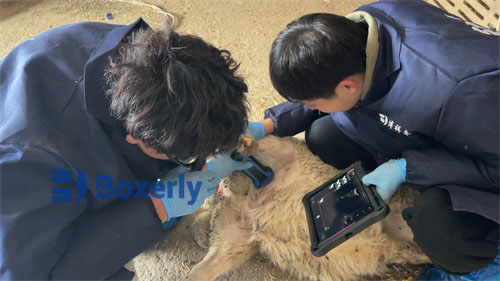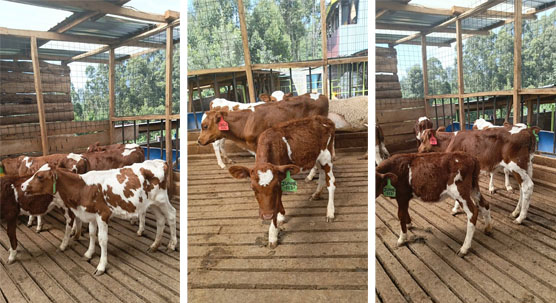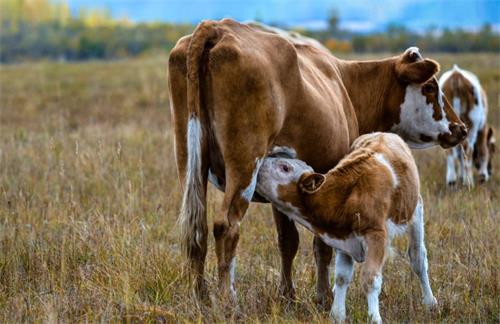Ultrasonography has become a critical tool in modern veterinary practice, especially for livestock management. Among sheep farmers, it is invaluable not only for reproductive monitoring but also for evaluating udder health in lactating ewes. Using ultrasound to assess the mammary glands ensures early detection of mastitis and helps optimize milk production during key phases of lactation. This article, written from a livestock farmer’s perspective, discusses the importance of regular ultrasonographic checks of the ewe’s udder, how udder and rumen development in lambs can be monitored with ultrasound, and the broader implications of these practices for animal welfare and farm productivity.

The Peak of Lactation: A Critical Time for Udder Monitoring
Three weeks postpartum, ewes reach their peak in milk production. This is a crucial stage for both the health of the ewe and the growth of her lambs. During this period, frequent ultrasonographic examination of the mammary glands is essential to ensure the udder is free from clinical or subclinical mastitis.
Mastitis is an inflammation of the mammary gland, often caused by bacterial infection. When left untreated, it can significantly reduce milk yield and quality. On ultrasonographic images, mastitis typically appears as increased echogenicity or structural irregularities in the mammary tissue. Detecting these changes early allows for timely intervention—usually a combination of therapeutic treatment and changes in milking management—to preserve udder health.
A healthy mammary gland on ultrasound shows uniform, hypoechoic tissue with clear glandular structure. In contrast, an inflamed udder may show hyperechoic zones, fluid pockets, or architectural distortion. By scanning the udder regularly at peak lactation, farmers can compare changes over time and respond quickly to potential issues, thereby minimizing economic losses and improving animal welfare.
Post-Peak Decline: The Hidden Risks of Late Lactation
Milk yield begins to decline sharply around 9 to 12 weeks postpartum. At this stage, milk production drops to just 5–10% of what is needed to meet the nutritional requirements of the lambs. Despite this, the ewe’s energy consumption for milk production remains high, and the efficiency of feed-to-milk conversion becomes low. Consequently, lamb weight gain slows noticeably in late lactation.
This phase often receives less attention than the peak, yet it still requires close monitoring of the udder. Continued use of ultrasound during this time helps ensure that the small amount of milk still produced is of good quality and that there are no lingering or developing udder issues. For instance, some ewes may develop chronic or asymptomatic mastitis later in lactation. Without ultrasound, such conditions might go unnoticed until the next breeding season, when they can impact reproductive success and future lactation performance.

Weaning Lambs: Understanding Rumen Development via Ultrasound
Determining the optimal time to wean lambs is not solely based on age or weight. Instead, successful weaning depends on the full development of the lamb's rumen, allowing them to digest forage independently and thrive without milk.
Rumen development in lambs progresses through three key stages:
Birth to 3 weeks – Non-ruminant phase: Lambs rely entirely on milk, with a non-functional rumen.
3 to 8 weeks – Transitional phase: Gradual introduction of solid feeds begins stimulating rumen microbial activity.
8 weeks onward – Functional ruminant phase: The lamb can fully utilize forage and digest complex carbohydrates.
Ultrasonography allows visualization of internal rumen structures and development. In the early phase, the rumen appears small with minimal motility. By the transitional stage, increased gas content and wall thickening indicate growing functionality. In mature ruminants, the rumen is easily distinguishable, with its layered contents and dynamic movement captured in real time.
Farmers can use this information to make informed decisions about when to wean lambs. Lambs with well-developed rumens will experience less stress and post-weaning growth checks, resulting in better weight gains and overall health.
Advantages of Ultrasound in Routine Farm Management
Ultrasound is a non-invasive, rapid, and reliable diagnostic tool. For sheep farming, it goes far beyond pregnancy checks or reproductive management. It enables:
Early detection of udder disease (such as mastitis),
Assessment of milk-producing tissue quality,
Monitoring of lamb rumen maturity for strategic weaning,
Reduction in the need for blind treatments, and
Improved animal welfare by minimizing unnecessary interventions.
Regular scanning becomes even more valuable in large herds where visual signs of disease or underdevelopment can easily be missed.
Practical Considerations When Using Ultrasound on Sheep
To achieve accurate and reliable results, it’s important to:
Use an appropriate frequency probe: A 5–10 MHz linear transducer is ideal for mammary gland and superficial structure evaluation.
Apply adequate coupling gel: This ensures good contact and reduces signal loss.
Scan in a quiet, stress-free environment: Calm animals provide clearer images.
Keep records: Documenting changes in the mammary glands or rumen development helps with herd-level decisions and treatment histories.
Conclusion
For sheep farmers, integrating ultrasonographic examination into routine husbandry practices offers tangible benefits in both health management and productivity. By monitoring udder health during peak and late lactation, and evaluating rumen development in growing lambs, farmers can make informed decisions that support better growth, healthier animals, and improved farm efficiency. As ultrasound technology becomes more accessible and user-friendly, its adoption on sheep farms is not just a trend—it’s a practical necessity.
link: https://www.bxlimage.com/nw/1207.html
tags:







